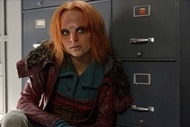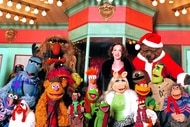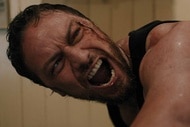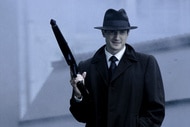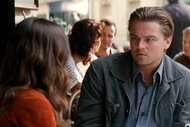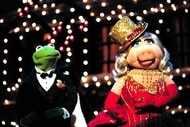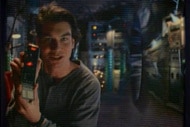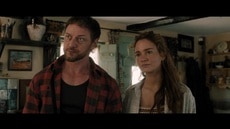Create a free profile to get unlimited access to exclusive videos, sweepstakes, and more!
Back to the Future Writer Bob Gale on the "Golden Rule" of Getting Time Travel Right
The complete Back to the Future trilogy is now streaming on Peacock!

For close to 40 years, the Back to the Future trilogy (all three movies are now streaming on Peacock) has influenced the time travel genre across all storytelling mediums: film, television, comics, novels, and more.
It's one of those immutable IPs that, like Doc Brown's sci-fi DeLorean, continues to pop up in different time periods, with writers of all backgrounds using the saga of Marty McFly (Michael J. Fox) as the gold standard and/or frame of reference for any story involving a romp across the space-time continuum. Need a shining example of that cultural impact? Look no further than the second-highest grossing release of all time, Avengers: Endgame, which lovingly tips its hat to Back to the Future's enduring legacy — both in dialogue and narrative.
Why Avengers: Endgame made that now-iconic reference to Back to the Future
"One of the things that I'm really proud of is that we were able to explain time travel in a way that even a 9-year-old can understand it. That scene in Avengers: Endgame where they're sitting around and talking about time travel, I understand that when they first previewed the movie, [it] didn't have that scene in it," Back to the Future co-creator and screenwriter Bob Gale told SYFY WIRE over a phone call about the Time Shopper graphic novel from Action Lab Entertainment and writer Tony Fleecs.
"I was told that in the focus groups, people said, 'Well, wait a minute, in Back to the Future they could do this and they could do that,'" he continues. "And the filmmakers realized, 'Oh damn, we gotta deal with that, because everybody's knowledge of time travel, today, in 2019, comes from those movies. So they had to put that scene where Ant-Man says, 'What do you mean? Back to the Future's bulls**t?'"
Despite that line of dialogue, Endgame still ended up taking a page out of the Marty/Doc playbook. As the Avengers travel through time to collect the six Infinity Stones during the "Time Heist," they revisit some of the biggest events in the MCU, viewing them from different vantage points.
"The irony is, of course, what they end doing in the Avengers movie is doing exactly the same thing that we did in Back to the Future Part II, which is going back into the previous movies and messing around with them," Gale says. "One thing that we did in the first movie that nobody — at least I'd never seen it done in a movie before — is the duplication paradox. Marty, at the end, gets to the mall in time to witness the events that he just lived through and sees a younger version of himself by one week doing exactly what he had done before."
How Back to the Future sparked a paradox debate amongst the crew
According to Gale, the paradox split the production team. "When we shot that, I remember that the crew had a lot of different opinions about whether this was violating the idea of the same thing occupying the same space in the same time and so forth and so on," he explains. "Even when we shot it, it was fascinating to everybody at that time. And it still is. And then we ramped that up in the 1955 section of Part II, with duplicate Docs as well as Marties."
While the ins and outs of time travel are mind-boggling to say the least, Gale is happy that he and director Robert Zemeckis decided to change the past without drastically changing the future. In an earlier draft of the first movie, Marty was supposed to come back to a more futuristic version of 1985, but that was eventually scrapped when they realized the rock-loving protagonist wouldn't be happy in a reality he didn't recognize.
"One of the dramatic challenges of time travel is about changing history. Basically, you can't do it. You can't kill Hitler. You can't stop Pearl Harbor. You can't prevent the assassinations of JFK, RFK, or Martin Luther King. Because everyone knows those things happened, and they can't walk out of the theater into a world in which JFK didn't get shot," he says. "But we were able to just change Marty's personal history and left the rest of history exactly the same, which was just a really cool way to tackle one of the great time-travel problems."
The Hill Valley we come back to at the end is pretty much the same. And although there's nothing particularly special about it, the town feels more like home than ever before after over an hour spent in the wrong time period.
"There's that great moment when Marty comes back to 1985 at the end of the first movie, and the town square of 1985, it looks like hell. You got the bum sleeping on the bench, and you got the adult bookstore, and the 1955 town square park is now paved over as a parking lot. He comes back and says, 'Everything looks great!' But it's only great to him because that's his world, he's back in his own familiar world," Gale adds. "We were able to just tell this time-travel story and make it not about changing history but making it a human story about something that everybody in the world has wondered: 'What did my parents do on their first date?' It just connects with everybody."
Back to the Future writer shares his golden rule for time travel
In recent years, Gale has returned to the Back to the Future world as writer on the Broadway musical and IDW's comic book continuation. When he does write or consult on follow-up material to the films (be it for comics or video games), Bob always has the same piece of advice: "If you look at the history of time-travel TV series and time-travel comic book series, there aren't many of them — if any of them — that have much longevity, because at a certain point the hard [part] about writing time travel is that when you have a machine, you can not only do anything, you can undo anything."
Gale concludes: "The directive I always had with anybody that was doing ancillary Back to the Future stuff is 'Never use time travel as an excuse for plot.' In the movies, we always made time travel really hard. It needed something to make it work. It wasn't like you could just jump in the time machine and go someplace. Lighting had to strike or you had to get the car to 88 miles an hour. Whatever it was, it was always a difficult problem, so that you couldn't just go back in time and undo what you did and get out of your situation that way."
The complete Back to the Future trilogy is now streaming on Peacock.
Originally published Nov 20, 2019.



